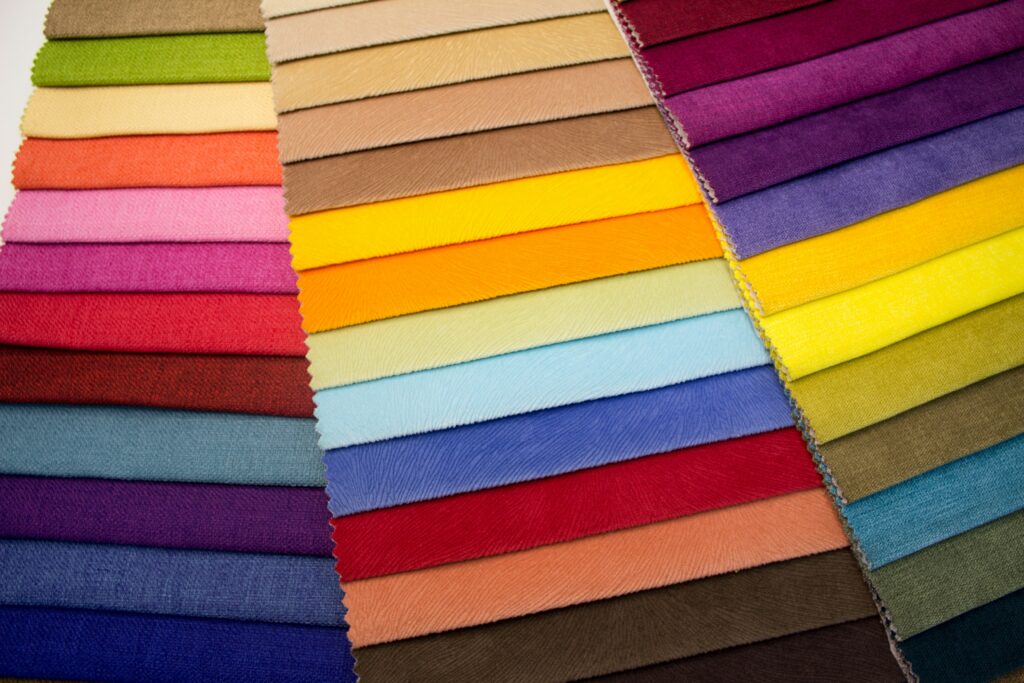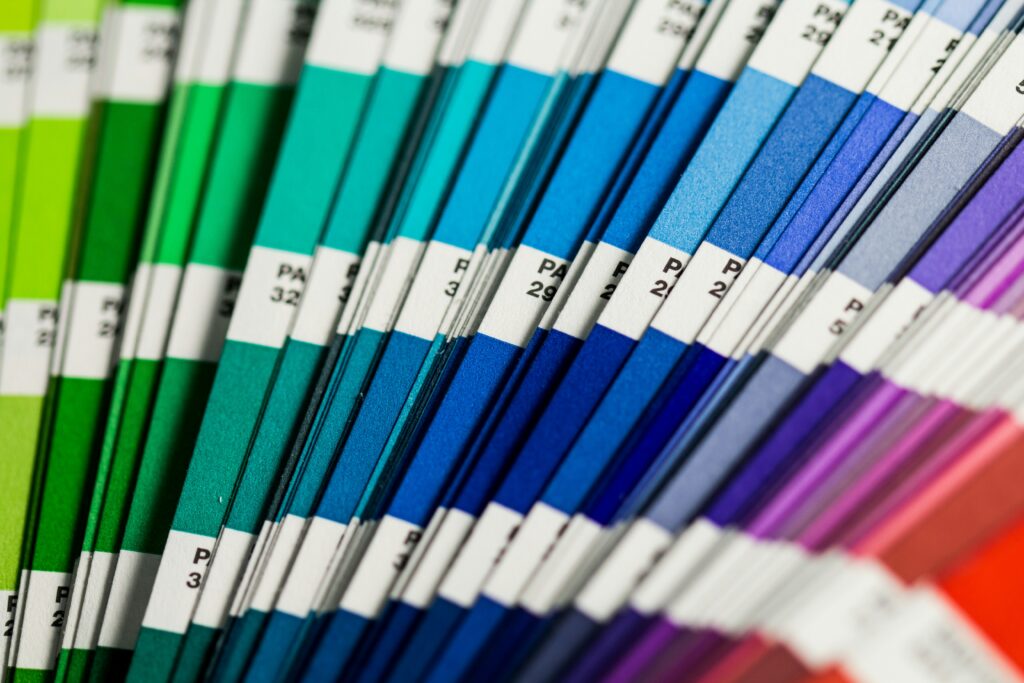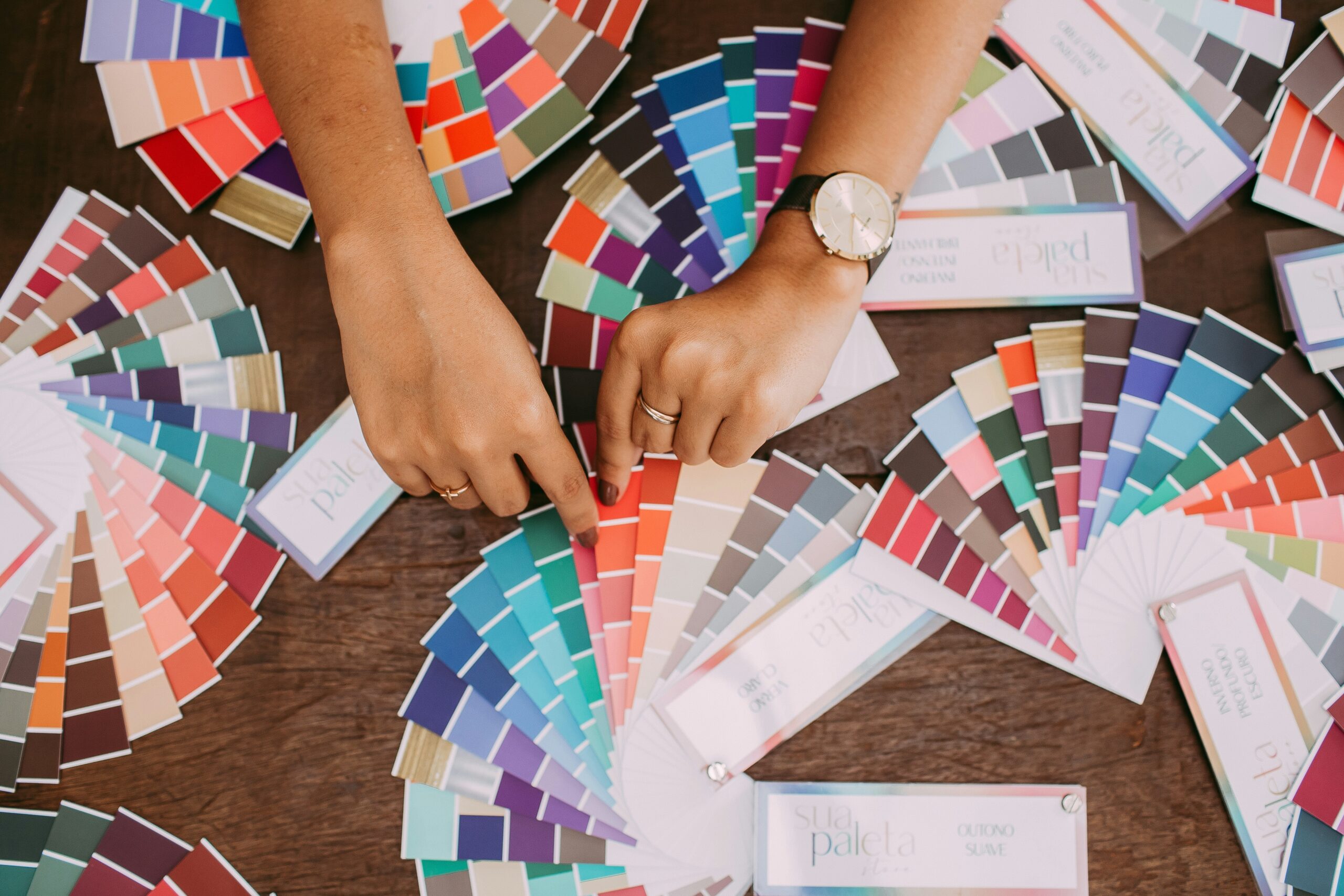Everyone wants to look good in their clothes. Being part of the melanated crew, there are very few colors that don’t benefit from all shades of our skin. At the same time, some colors just naturally look better than others, and this isn’t about skin tone — especially since undertones (which have little to do with a person’s melanin content) play a major role in how fabric colors and metal tones appear against the skin.
This is why having a professional color analysis performed can help people create a wardrobe with colors that are flattering and produce the perfect effect every time. But color analysis, especially of the seasonal variety often centered fairer skin tones, leaving people with deeper tones either shut out or limited to only one or two options. Therefore, we spoke with expert Zayna Rose to learn all about how to perform a seasonal color analysis with melanin in mind.
What is a Seasonal Color Analysis?

Seasonal color analysis is a twist on color theory that rose to prominence in the 1980s. American color theorist Suzanne Caygill, blended the concepts of color psychology and seasonal palette theory to create the concept.
In short, seasonal color analysis relies on reviewing a person’s eye color, skin tone, hair color and even lip color to create a complete complimentary color palette. This idea was pushed ahead by Carole Jackson, a psychologist and author of the book “Color Me Beautiful.” Through her work, she focused on helping clients create wardrobes based on seasonal palettes that matched both their features and skin tones.
What are the Seasonal Colors?
Seasonal colors can be broken down into two segments, the season and actual colors. The seasons should be familiar: winter, spring, summer, and fall. However, whether a person aligns with a particular season has nothing to do with the month in which they were born.
Winter Seasonal Colors
Winter refers to people with cool undertones and dark hair. People that fit this description may find that bold jewel tones and even classic neutrals like black and white are the most flattering. Meanwhile, softer or muted hues and even earth-toned shades should be avoided since these aren’t as complimentary.
Spring Seasonal Colors
Someone that fits the spring color palette will have warm undertones and light hair. This category will find that their best colors are bright picks like turquoise or coral. Neutrals will be less stark — instead options like a warmer-hued khaki shade or even an off-white with cream undertones will work well. Conversely, black and white, as well as pastels or jewel tones should be avoided.
Summer Seasonal Colors
A summer seasonal palette means the person has cool undertones with light hair. People with these tones will look best with more muted colors like dusty rose or heather gray, as well as soft pastel shades. Classic white is also a good choice.
Autumn Seasonal Colors
The final option is an autumn seasonal palette which is reserved for people with warm undertones and dark hair. This type is best paired with rich earth tones such as golden brown, warmer grays, and olive shades. Similar to the spring seasonal color set, this segment should avoid white and black, along with pastels.
Seasonal Color Caveats for Melanated Skin

Historically, seasonal color theory defaulted to only considering autumn and winter seasons for people of color. This is because those are the two seasons that prioritize dark hair or eyes. Following this logic, all darker skinned people should either focus on blacks and whites, bold jewel tones, olives and rich earth tones — with gray for a little variety.
However Zayna Rose, AICI CIP, an image consultant with 20 years of experience providing color analysis as part of her services cautions that defaulting people of color to autumn or winter palettes is problematic because “supportive colors are based on one’s undertone versus the depth of skin tone we see on the surface.” As a woman of color with a medium/deeper skin tone, she’s also had other professionals attempt to “over-simplify the use of color based on overtone.”
But there are plenty of dark skinned people that can wear bold neon hues, soft pastels and any color in between. Because of this, more stylists are pushing back against the idea that dark skin defaults to winter or possibly autumn palettes. Zayna continues that “two people with very similar skin tones could have starkly different home palettes.”
Instead, many color experts acknowledge that each seasonal palette should be further categorized into four additional groups:
- Spring: light, warm, bright, true
- Summer: light, cool, soft, true
- Autumn: deep, warm, soft, true
- Winter: deep, cool, bright, true
But to get here, people need to rethink how they select the appropriate palette for their natural hue. Specifically for people with deeper complexions, the emphasis is on whether certain colors make all the features pop (i.e. nose, cheekbones, eyes), and not just your hair color. By contrast when colors aren’t complimentary, a person’s features tend to blend into the background and the color may wash them out instead of enhancing their presence.
The Lipstick Test
Seasonal color palettes are initially dictated by undertones. So, determining undertone is critical. Classic methods include looking at the veins, the white t-shirt test, and wearing metal toned jewelry. However, these tests usually center fair skin. Nowadays many people with darker skin tones (and even those who are fairer) are turning to the lipstick test to help focus their search for the perfect color palette.
With the lipstick test, people try on different shades of lipstick and determine by looking in a mirror whether it complements their skin tone or looks “off.” While this is a good starting point, Zayna reminds budding fashionistas that “it’s not enough to go in order to pronounce a palette but what looks flattering and what doesn’t can certainly provide some data and direction on the next palette to examine.”
Zayna notes that the best way to find the right seasonal palette for a person’s skin tone is with “a strategic process of elimination.” This means that she begins with a color flag that has a full array of colors before moving on to fabric undertone indicators. “Once I can see that the client’s undertone is warm, cool or on the border I keep moving through different fabrics to prove or disprove what I think I see.” She concludes that key indicators used during the analysis include:
- When are the whites of the eyes most vibrant?
- When are teeth at their whitest?
- What’s the natural hair color?
- What’s the pattern within the eye?
The 12 Seasonal Colors
According to the lipstick test, the seasons are broken down into three segments that each have a primary and a secondary color aspect that refers to the full recommended makeup and fabric color palette. Each subcategory pairs best with the following lipstick colors:
- Bright Spring: Complimenting lipstick colors will range from bold orange to coral pinks to intense plums. However the full color palette for this season features colors that are bold and will either be neutral warm or medium light.
- True Spring: Lipstick colors range from warm orange to peachy coral to warm plum-red, but palette color aspects are warm and bright.
- Light Spring: Full palette color aspects are light and warm while complimenting lipstick tones are light-warm peaches to light oranges and warm reddish pinks.
- Light Summer: Palette color aspects are light and cool with the lipstick cool blue-based pinks to light purples, and even cool corals.
- True Summer: Palette color aspects are cool and muted with lipsticks ranging from pale blue-based purples to medium blue-based pinks, and darker rose pinks that are muted.
- Soft Summer: Palette color aspects are muted and cool, lipsticks will include pale and muted gray-pinks to cool and pale purples, and darker muted plums.
- Soft Autumn: Lipstick shades include pale or muted grey-peach to warm but pale brown-plums and muted plum or brown-red shades; palette color aspects are muted and warm.
- True Autumn: Palette color aspects are warm and muted with lipsticks ranging from earthy brown-orange or red to dark earthy brown and plum.
- Dark Autumn: Palette color aspects include dark and warm, lipsticks shift from medium earthy-brown or orange through plum red and dark brown or plum.
- Dark Winter: Palette color aspects are dark and cool with lipsticks shifting from dark berry to dark cool plum.
- True Winter: Palette color aspects are cool and bright, lipsticks shift from pastel pink to cool yet vivid purples and dark cool plums.
- Bright Winter: Palette color aspects are bright and cool, lipsticks range from intense pink to medium-dark pink purple shades and finish with cool bold berry shades.
What’s Your Seasonal Color Palette?
The lipstick test is a great DIY way to find a corresponding color palette that works for a person’s skin tone and undertone to bring out the best in their features. Understandably, with 12 to 16 seasonal color palettes, doing this independently isn’t easy — which is why some people hire a color stylist to help them find their palette.
More importantly, for the melanin-rich set, finding a stylist experienced with analyzing deeper skin tones is critical to avoid being labeled by default as a winter or autumn.
